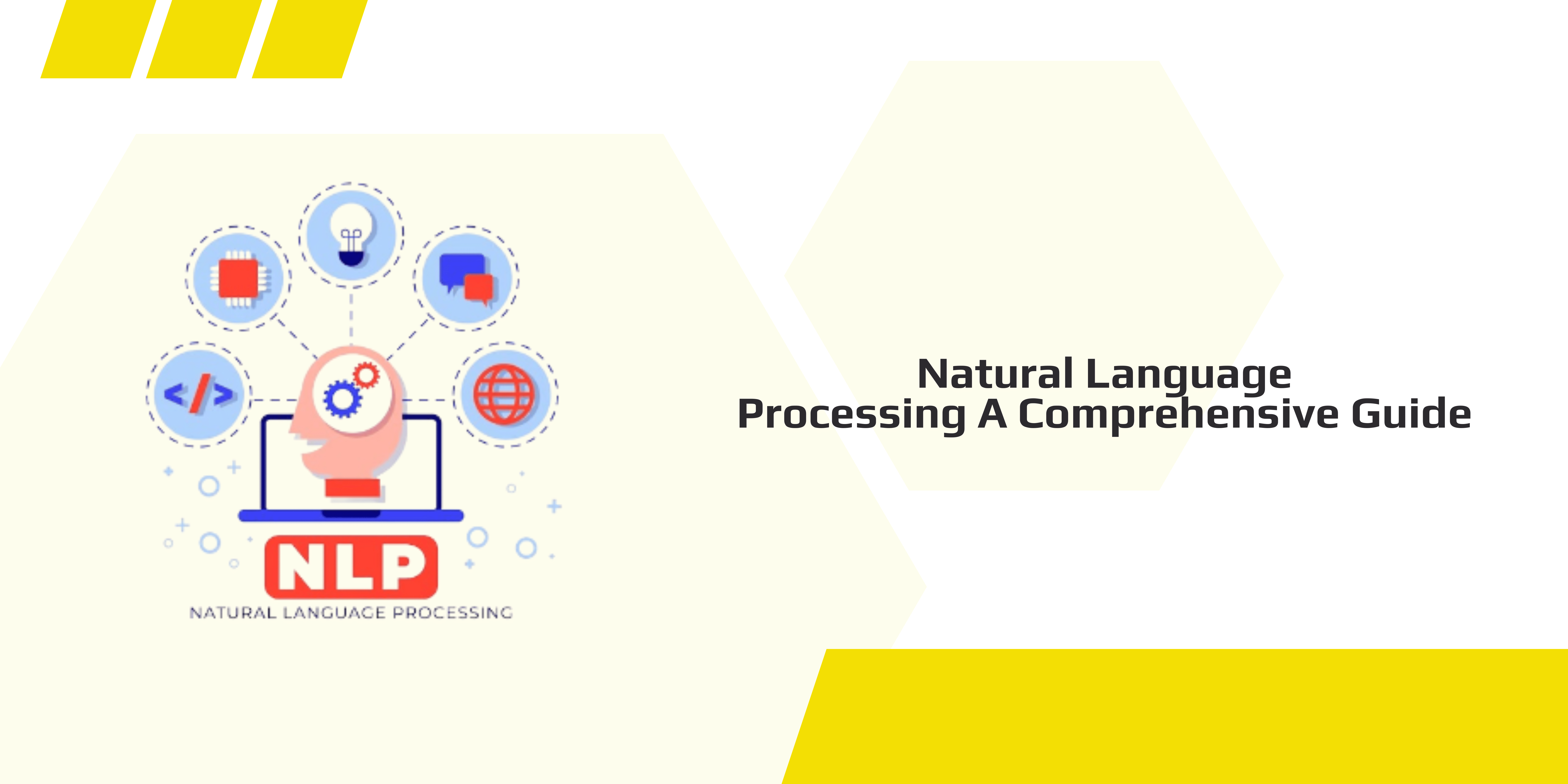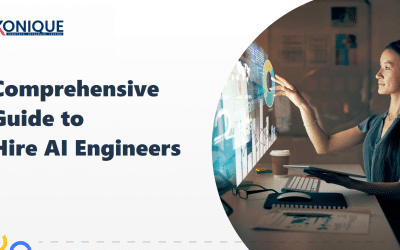Natural language processing (NLP) services have become essential to human-machine interaction as technology develops. The following guide offers an in-depth exploration of NLP technologies and applications and their dynamic ecosystem of services available today.
NLP (Natural Language Processing) is an interdisciplinary field combining linguistics, computer science, and artificial intelligence that allows machines to comprehend human speech – from chatbots and virtual assistants through language translation and sentiment analysis – providing machines with human-like interactions in digital systems. NLP is invaluable in our daily digital interactions – chatbots are just a prime example.
This comprehensive guide will explore the fundamental concepts of Natural Language Processing development, including language models, syntax, semantics, and pragmatics. Furthermore, we’ll examine its practical uses across industries like healthcare, finance, and customer service – showing its transformative potential for efficiency and user experience enhancement.
Understanding Natural Language Processing Technologies
Natural Language Processing (NLP) is a subfield of artificial intelligence that seeks to enable computers to understand, interpret, and generate human language that is both meaningful and contextually pertinent. NLP requires multifaceted approaches, including expertise in human linguistics, computational power, and machine learning algorithms for development.
Dynamic Development Process of Natural Language Processing Systems
This article details the multidimensional journey of NLP development, detailing its key elements, challenges, and significant progress made within this dynamic field.
Linguistic Analysis
At the core of NLP development lies linguistic analysis, where developers leverage their understanding of grammar, syntax, and semantics to construct models that accurately interpret human speech. This stage involves breaking language structures into understandable components so machines can fully grasp human conversation without human misinterpretations.
Corpus Compilation and Annotation
Natural language processing development relies heavily on large datasets known as corpora for training models, consisting of vast amounts of text used as training grounds by NLP algorithms. Annotation (the practice of labeling data with particular linguistic features) plays an essential part in corpus preparation, as annotating allows machine learning algorithms to make sense of diverse language patterns and variations that arise while developing their models.
Algorithmic Development
At the core of NLP lies algorithm development for language understanding. Machine learning models such as Recurrent Neural Networks (RNNs) and Transformer Architectures are specially created and fine-tuned to process language data quickly and analyze it effectively, with ongoing refinements necessary for adaptability to changing patterns of speech or user interactions.
Challenges Involved with NLP Development
Though NLP has made great advances, its development remains challenging and constantly evolving. Due to human language’s intricate structures and dialects, ongoing and dynamic adjustments must be implemented into NLP development efforts for optimal success.
Ambiguity and Context
Human language can often be vague and unclear. Context plays an essential part in deciphering meaning. Natural Language Processing systems face difficulty accurately translating statements with unclear meaning into their intended context or understanding subtle nuances that require constant refinements for optimal comprehension of meaningful context. NLP developers regularly improve algorithms to enhance contextual comprehension for maximum end-user benefit.
Variability and Diversity
Language is ever-evolving, with subtle distinctions across regions, cultures, and individual communication styles requiring robust Natural Language Processing models capable of handling its dynamic nature to accommodate diverse linguistic patterns and provide accurate results. Therefore, NLP models must undergo continuous updates and upgrades to meet this challenge effectively.
Lack of Common-Sense Understanding
While humans naturally understand common sense and interpret implicit data, natural language processing systems sometimes struggle with this aspect of language translation. Thus, developing algorithms replicating common sense understanding remains one of the key challenges within this industry.
Recent Advancements in NLP Development
Recent advances in NLP development have witnessed extraordinary strides, thanks to deep learning’s combination with increased computational power and vast datasets. Notable accomplishments include:
Transformer Architectures
Transformer architectures have transformed NLP development, as demonstrated by models such as BERT (Bidirectional Encoder Representations from Transformers) and GPT (Generative Pre-trained Transformer). Pre-trained on massive datasets, these transformer models have demonstrated outstanding language understanding and generation abilities that set new benchmarks in developing NLP applications.
Transfer Learning (TL)
Transfer Learning (TL) has emerged as an innovative approach in NLP development. By pre-training models on large datasets before optimizing them for specific tasks, transfer learning has proven highly efficient in language processing efficiency and effectiveness, helping NLP systems overcome data limitations and increase generalization capabilities.
Multimodal NLP
As digital communication increasingly integrates visual and textual elements, multimodal NLP systems have become prominent. These advanced NLP engines can understand and generate content incorporating textual information and images for applications, including captioning images, visual question answering, etc.
Ethical Considerations
With NLP technology becoming ever-more pervasive, ethical considerations have taken center stage during its creation. Addressing biases, maintaining transparency, and encouraging inclusivity are vital aspects of NLP development that aim to mitigate any possible negative repercussions for society.
Future Directions in Natural Processing Development
NLP technology continues to develop at an impressive rate, opening many promising pathways toward advancing language processing technology.
Explainable AI
Understanding Natural Language Processing models better is vital, which is why explainable AI techniques were designed. Their goal is to make decision-making processes in NLP systems more transparent so users may better comprehend why certain output is generated.
Continual Learning
NLP systems that can continually learn and adjust are vitally important for long-term relevance, making continual learning approaches popular in NLP development circles. Models using such approaches incrementally gain new information without losing existing information – something NLP developers seem eager to embrace as part of a long-term solution.
Conversational AI
Advancements in conversational AI aim to foster more natural, human-like interactions between machines and users. NLP models that understand context, sentiment, and user intent in real-time have created enhanced virtual assistants, chatbots, and other conversational interfaces.
Unleashing the Advantages of Natural Language Processing Services
Discover all of the advantages that Natural Language Processing development services bring.
Improved Communication and User Interaction
At the core of NLP services lies their capacity to understand and respond to human language, creating an intuitive user experience between humans and machines. Siri, Alexa, and Google Assistant all utilize NLP technologies, enabling their virtual assistants to offer natural language commands through virtual assistants like these; such interactions not only facilitate voice communications but can extend further via chatbots or messaging applications for customer engagement across industries.
Effective Information Extraction and Summarization
NLP services play a pivotal role in extracting relevant data from enormous datasets. Analyzing textual content and summarizing documents, articles, or social media feeds into concise insights for users – giving businesses access to quick market intelligence gathering, trends tracking, and staying abreast of their industry landscape.
Sentiment Analysis to Enhance Decision-Making
Sentiment analysis services such as NLP have become invaluable tools in today’s data-driven world, enabling organizations to accurately gauge public opinion, customer feedback, and social media chatter. By understanding sentiment analysis results, businesses can make informed decisions regarding marketing strategies or proactive customer responses while improving customer satisfaction levels and protecting brand reputations.
Customized User Experiences
NLP services enable businesses to deliver tailored content and services based on individual user preferences. These services deliver personalized recommendations, content, and services for an engaging digital user experience across various platforms by analyzing user behavior, preferences, and interaction history. NLP provides businesses with tools they can leverage in tailoring services and content based on an individual’s preferences – this increases engagement while increasing customer loyalty due to personalized recommendations delivered with NLP technology.
Simplified Data Entry and Analysis
Manual data entry and analysis are time-consuming and error-prone, while natural language processing services automate these tasks by extracting relevant information from unstructured sources like emails, documents, and forms. This time-saving reduces errors associated with manual entry, allowing organizations to focus on extracting meaningful insights from processed data that drive more informed decision-making processes.
Multilingual Support and Global Reach
NLP services help businesses overcome language barriers that inhibit effective global communications by offering multilingual support that facilitates business interactions across cultures. From translation services and sentiment analysis analyses in different languages to cross-cultural communications facilitation services and translation, NLP services allow businesses to expand their footprint globally while meeting all necessary compliance regulations in international markets.
Automating Routine Tasks and Workflows
NLP services hold great potential to transform business processes by automating routine tasks and workflows, from automating customer inquiries to processing emails more efficiently – from processing customer inquiries to categorizing emails – NLP can enhance operational efficiency by relieving employees of manual workload. Not only does this free up valuable human resources, but it can also minimize errors associated with repetitive tasks, leading to increased productivity.
Compliance and Risk Administration
NLP services can play an invaluable role in industries where regulatory compliance is paramount, helping organizations adhere to guidelines while mitigating risks. By scanning textual data for compliance-related keywords and patterns, organizations can identify potential hazards and take proactive measures against them; such measures prove particularly valuable when applied across sectors like finance, healthcare, and legal services where regulation can be tight.
Conclusion
This comprehensive guide on Natural Language Processing (NLP) has provided an insightful glimpse of its complexity, providing readers with insight into language understanding between computers and humans, with rapid technological progress from rule-based systems to sophisticated deep learning models in recent decades.
Exploring the essential components of NLP, such as tokenization, named entity recognition, sentiment analysis, and machine translation, has illuminated the intricate challenges and breakthroughs driving this cutting-edge technology.
As we traverse the intricacies of Natural Language Processing development, it becomes evident that its combination of linguistics, computer science, and artificial intelligence continues to drive innovation. Our guide emphasizes data’s critical role in training robust NLP models – specifically emphasizing its importance in improving language comprehension and contextual awareness.
As natural language processing (NLP) applications multiply across industries and applications, the role of NLP development companies becomes more crucial. They serve as catalysts for groundbreaking solutions using cutting-edge technologies that create intelligent systems capable of understanding and reproducing human speech in a human-like manner. Their partnerships between academic research, open source contributions, and commercial applications ensure sustained development and relevance of NLP.












